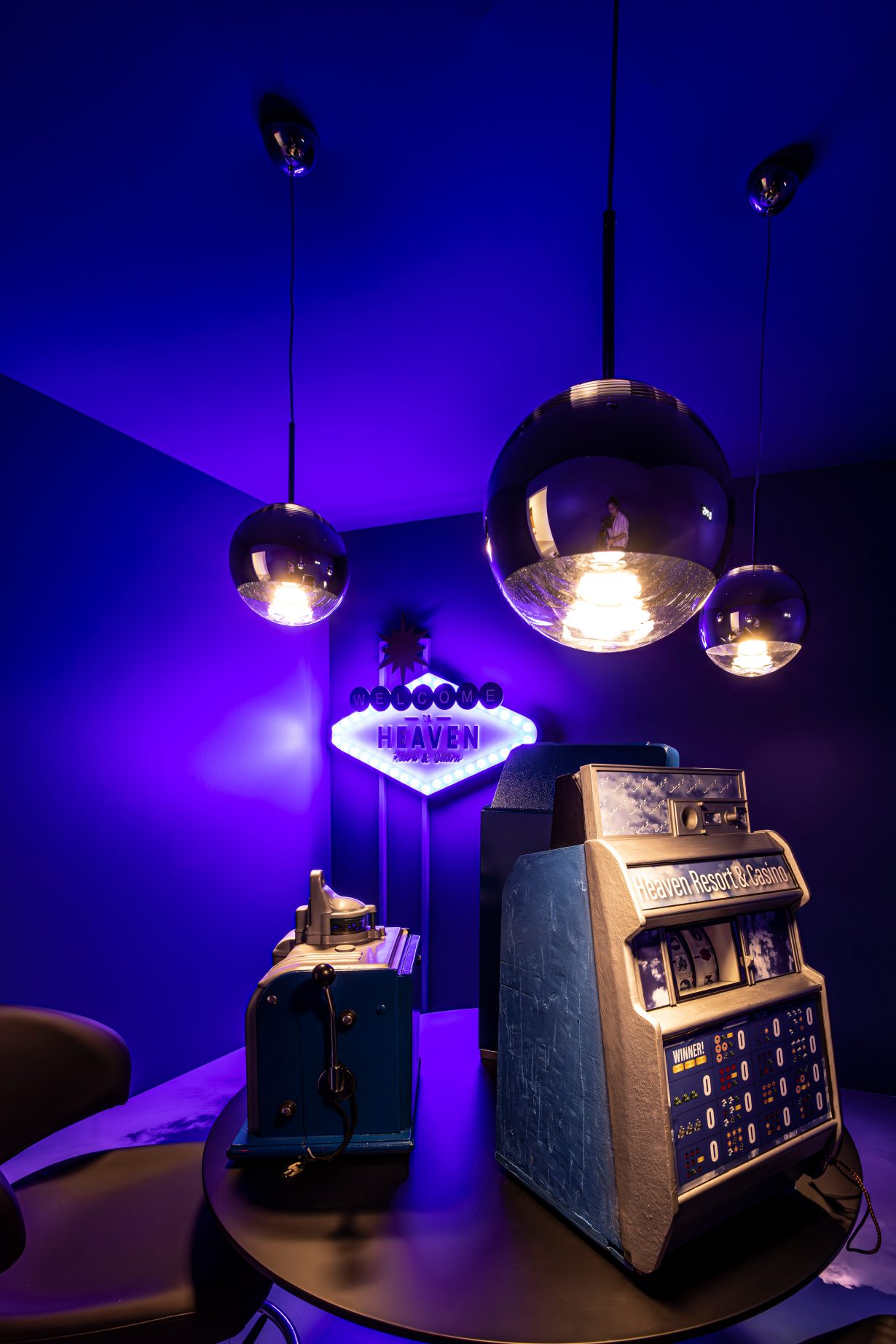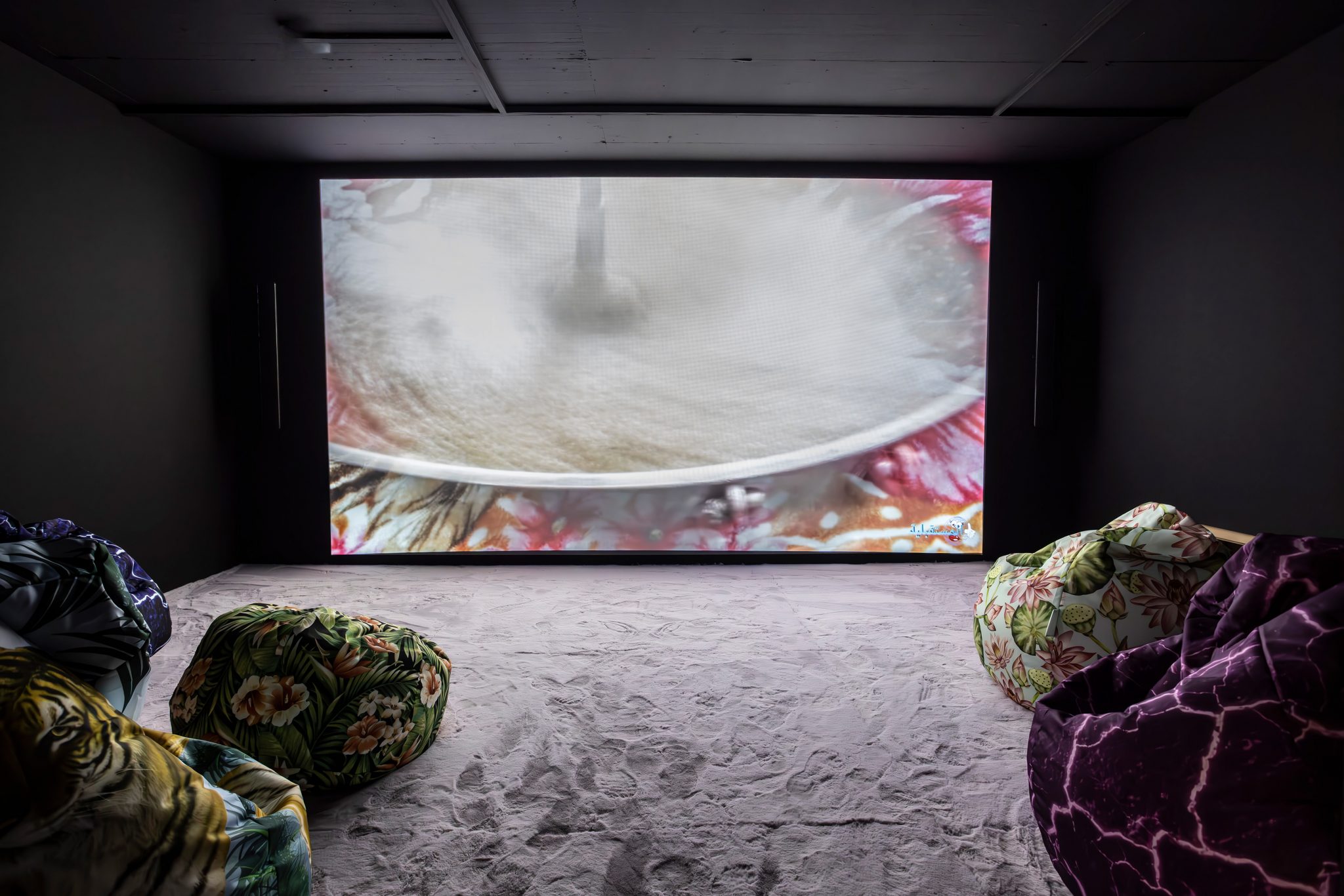‘Evaporating Suns’ attempts to refresh an outdated Western perspective of Arab mythology that situates it solely in the past
What’s the purpose of an exhibition that seeks to blend the old and the new in order to introduce cutting-edge Khaliji culture? A cynic might say that this show, which opened days after a bilateral conference on increased economic cooperation between Switzerland and the United Arab Emirates (from where the vast majority of artists on show here come or to which they are connected) took place in Bern, simply follows the prevailing wind in international economics. Over the past two decades, Switzerland’s exports to the UAE have increased by roughly ten percent per annum. Of course, those with a less twisted mind (and an MFA) might pause, scratch their chins and say that all this ancient and contemporary business was simply a consequence of realpolitik. Using what we, in Europe, do know about the Gulf – the types of tales and fantasies collected in popular anthologies such as One Thousand and One Nights, many of which may or may not be from the region – to make an introduction to what we generally don’t know – the Gulf’s contemporary art – more digestible. And on the evidence here, you – chin scratched, MFA burnished – might well be right. Although according to Kulturstiftung Basel H. Geiger’s director, Raphael Suter, writing in his introductory walltext to the show, its purpose is to destroy the myth that contemporary art from the Arabian context is somehow ‘behind’ or not up to date when compared to its Anglo-European cousins. The implication, in his text, is that the ignorant suppose that art in the Gulf is trapped within another type of realpolitik – a consequence of religious or political restriction. Even though, in 2009, a referendum in Switzerland led to a constitutional ban on the construction of minarets on mosques within its borders.
That institutional framing is, however, a little distinct from the curatorial framing (the curators are Munira Al Sayegh and Verena Formanek) of the show itself. Here a focus on mythological context, as much as geographic or linguistic context, is, fundamentally, what links the work by 13 contemporary artists on show. All of which are made by artists living in or with a diasporic relationship to the Gulf. For a visitor, all that, in turn, might seem like an invitation to take a Jungian approach and read the artworks as a series of conscious individual actions that pick their way towards a collective Arab unconscious that’s embodied in the traditions of mythological storytelling. The drive to ‘see’ the show as a gateway to an Arab unconscious is further encouraged by the presence of map (a curatorial intervention) on which the various myths at play are located at various points around the Gulf. Which gives off a whiff, as is the case with many shows grounded in a geographical context, of the notion that here the individual agency of each work is both celebrated and denied.

That, and the play between the clichés surrounding traditional and modern, is something to which Saif Mhaisen’s largescale Self Portrait 11 & 12 (2015–16) certainly nods. In it, the artist features twice, each of him sitting either side of a white table against a white background. To the left he is shaven-headed and bearded, dressed in a white thobe, demonstratively pointing at some invisible spot on the blank table. He looks angry. To the left he is shaven-faced, dressed in a shirt and waistcoat, leaning casually on the table and staring confidently out at the viewer as if to show off his well-groomed hair. He looks charming. We’ve no idea what either character is performing, but in that absence, we run with the stereotypes. Part of the general art-lover’s desperation to attach meaning to form.
That becomes a little problematic in Maitha Abdalla’s The Dancer’s Skin (2022–23), which transforms the museum’s entrance into a theatre stage, bringing the idea of storytelling to the fore. Three lifesize bronze and ceramic figures, fusing human and animal (pig, donkey and rooster) forms, are frozen mid-dance between a pair of leafless trees. Behind them, on the wall, is Alluring Silence (2023), a largescale oil-and-charcoal painting (or backdrop to the sculptures) of humans dancing in an equally sparse wood, while observed by another cackling rooster. There’s the vague feeling of some kind of ritual at work, or some kind of truth being revealed, but ultimately the work remains opaque and obscure (albeit with echoes of tales like ‘The Town Musicians of Bremen’, and an invitation to read the braying of donkeys as warning of the presence of the devil, the pigs symbolising gluttony and so on) in terms of a narrative, which reduces it to some sort of atmospheric backdrop in and of itself.

So, it’s a sense of the theatrical and the performed that we take into Alaa Edris’s Al Kursi (The Chair) (2023), a series of seven carved wooden thronelike chairs, one for each of the states that make up the UAE. They’re arranged in a councillike V-formation; each has a face, carved into the backrest, that continues the fusion of animal and human, while the chairs themselves metamorphose to feature sickle armrests, human feet, bird claws, rock paws and so on. In a way the chairs, designed to elevate their occupants, also bring them to the realm of beasts. In this way the chairs ground the Emirates (in popular fable and story) and give them a specific nonhuman identity; which given that the UAE was only formed as a nation-state in 1971 might be a necessary task. But even that nod to the powers behind the throne can’t hide the fact that, whichever way you want to dress it up, there are seven of them, each of which is designed to seat a single person – an emir. They’re not for everyone. A fact that their being clothed in the mythology of a nation seems designed to mitigate or conceal. It’s reality that’s being avoided here, you begin to think. Which is, presumably, part of the artist’s conceit.
While these works were commissioned for the show, it’s one of the two works that weren’t (Mhaisen’s is the other) that provides its standout moment. Farah Al Qasimi’s 42-minute feature film Um Al Naar (2019) is a first-person confessional account of a depressed, millennia-old jinn (its name, the title of the film, translates as ‘Mother of Fire’) who, in recent centuries, has found itself increasingly out of place and out of time in the UAE. “As people believe in us less and less and we lose our power”, the jinn says, dressed in a Halloween-style ghost-outfit, homemade out of a collection of floral tablecloths. (When it is powerful, it informs us, it possesses the bodies of believers; in the current state of things, it’s stuck with the pathetic tablecloth arrangement.) Before detailing how colonialisation, modernity and museology have combined over recent centuries to force their diminution. (And, naturally, the fact that the jinn is using one of modernity’s prime communication tools – handheld camera, moving image – only adds to the sense of irony that suffuses the work as a whole.) The tragicomic film is witty, pointed and offers something of an alternative insight into the state of myth within contemporary Khaliji culture: irrelevant, ignored, crushed in a clash of the old and the new.
Evaporating Suns: Contemporary Myths from the Arabian Gulf at Kulturstiftung Basel H. Geiger, through 16 July
